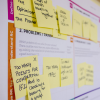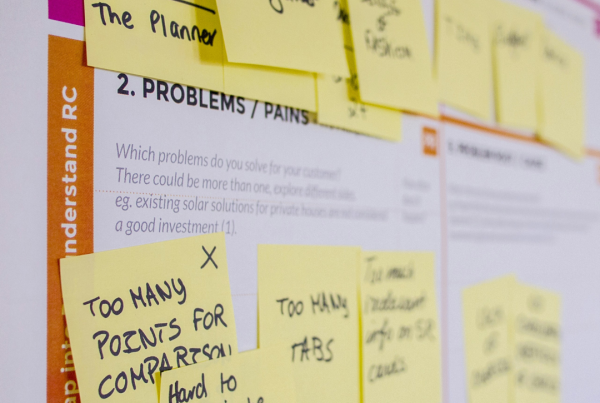Part 4 of ‘How to Build a Design Agency for Under $3K in 5 Years’
For business owners, there are many firsts that stay forever fresh in memory.
Among the many firsts in this journey, I’d say hiring your first permanent employee could easily be in the top 10 best moments in your business album, right behind making your first sale or contract.
I’m not talking about freelancers or contractors, but a full-time or part-time permanent employee with a salary, some benefits and a retirement fund that you’re responsible for.
Hiring your first employee is the point when you legitimately become a boss. Perhaps it was your lifelong dream of answering to nobody. Or maybe it was the inflection point when your business started to grow.
Either way, it is a daunting yet exhilarating experience. For some, it happened before you open for business and for others, it took years before you could afford it.
When is the right time to hire?
If you’ve been following my series on how to build a design agency for under $3000, you would have acquired a retainer client in the previous step. Here’s a recap in case you missed it:
- Step 1 to 5 –– Start building your agency while working part-time
- Step 6 to 9 –– Create a sophisticated brand and portfolio
- Step 10 to 11–– Secure your first retainer client enough to quit your part-time job
By now, you may be feeling overloaded with work, especially if you have secured more retainer clients and bigger projects. Things are getting crazier and you find yourself working well into the early mornings every day of the week.
While this is a good time to hire, it shouldn’t be the only reason you hire.
I think the answer to the question of when to hire is to make sure you know yourself well. Ask yourself this:
”What are the things I’m good at? And what are the things I’m bad at?
I hope you know by now that you can’t be great at everything. Everybody sucks at something.
You may be great at producing brilliant designs, finding new opportunities, managing clients and employees or crunching the numbers but you can’t be great at all of them. The whole point of this exercise is to identify your weaknesses early, so you can hire someone whose strengths complement yours.
Case in point: my first hire was a website developer because I needed his exceptional skills to bring my designs to life. In fact, he started working full time for Relab even before I did as I was holding a part-time gig then.
How to find and hire the right person
Advertising was out of the question because I had zero budget for it. In the early days, I relied heavily on my network of ex-colleagues, friends and family to find candidates. It was mostly word of mouth and social media.
I tried Gumtree, which is an Aussie marketplace for pretty much anything under the sun, but couldn’t find good people there. These days, you can try the free indeed.com as I’ve heard good things about it.
My top 3 deciding factors in hiring are:
-
their genuine interest in what Relab does
-
their personality fit in the team
-
their skills and capabilities
Because we were a small agency then, I avoided ones who looked like they were only in for the money. I’d reject a technically great candidate who bear no interest in our agency’s values and culture because in the long run, I knew it would hurt my company.
As a word of warning, you may often lose candidates to bigger companies and that’s completely fine if they prefer working with a bigger name or brand. I’ve learnt that great employees are the ones who appreciate working in a small agency and believe in your company culture. Try to explain this as clearly as possible in your interviews to manage expectations.
Create a trial or probation period to get to know each other’s working and communication style. If you’re hesitant about someone and they’re open to part time, do that first before offering a full-time role.
In terms of budget, you should know your 12-month income projection like the back of your hands. At the end of the day, you’re hiring someone to grow the business and not to put you out of business. Hiring without a care towards money is a sure-fire way to go bankrupt.

A final advice…
If you’re spending money to hire someone, then make sure you actually hand over the work and the responsibilities fully.
It sounds simple, but a lot of small business owners struggle with relinquishing control when they first become a boss.
As my agency grew, I found myself getting busier and busier. At first, I thought it was because we were clinching more projects. Soon, I realised that I was the only one running around like a headless chicken in the office where else my staff were about as chilled as cucumbers.
Oh yes, I had committed the cardinal sin of micromanaging.
I had hired people to help me out with many tasks but not to be responsible for them because I still had the final say in almost everything.
Today, I can take a holiday, clock off on time to spend time with family and leave the agency for meetings and events knowing that my team has got everything covered. Once I stopped micromanaging, the agency started to flourish.
Of course, this positive change did not happen overnight. Over time, you will learn the value of working on your business rather than in your business. You don’t need to be designing spectacular artworks or writing punchy taglines for your clients, that’s what designers and copywriters are for.
Your job is to grow the agency, make sure your clients are happy and everything runs smoothly.
I’ll show you how to do exactly that in my next post. Until then, good luck in building your dream team. Remember, a design agency is a service-based business, and that means your people are your best asset.
Illustrations by: Irenne Tj
https://www.instagram.com/irennetj/
https://www.facebook.com/inspirationneverends/







